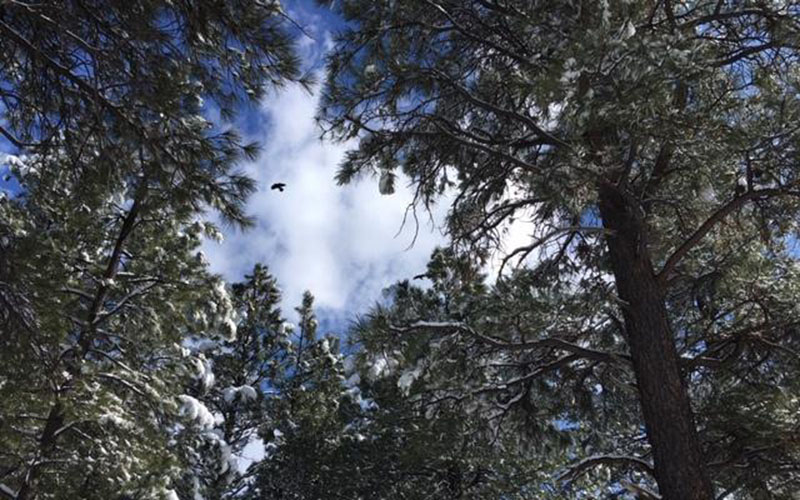- Slug: BC-CNS-Forest Thinning,350
- 1 photo, audio story available (thumbnail, caption below)
EDS: A previous version of this story included misinformation. The article misspelled the reporter’s name in the byline. The story here has been corrected, but clients who used earlier versions are asked to run the correction that can be found here.
By LAUREL MORALES
KJZZ
FLAGSTAFF – The decision to cut more than 1,300 old-growth trees last summer in an Arizona forest has been criticized for breaking trust with the thinning project’s backers. The rebuke comes at a time when forest management is receiving national attention for the role it plays in preventing catastrophic wildfires such as the ones in California.
The forest service cut the old trees in the Apache-Sitgreaves National Forest for fear of losing more to dwarf mistletoe, a parasitic plant. But only 6 percent of the trees sampled were infested, according to data collected by Joe Trudeau with the Center for Biological Diversity and the Four Forests Restoration Initiative.
“The problem on the landscape is not an overabundance of old-growth trees,” Trudeau said. “The problem on the landscape is the density of young small diameter trees. So what we need to be doing is focusing forest restoration on the small diameter trees and the science supports that unequivocally.”
Interior Secretary Ryan Zinke responded to such complaints in a news conference Nov. 20: “Radical environmental groups would rather burn down the entire forest than cut a single tree.”
The Four Forest Restoration Initiative is a partnership that includes the U.S. Forest Service, the Arizona Game & Fish Department and the Grand Canyon Trust. The goal is to restore 2.4 million acres of ponderosa stretching across northern Arizona from the Grand Canyon to the New Mexico line.
The forest restoration group’s stakeholders had toured the area and later sent a letter to Steve Best, the Apache-Sitgreaves National Forest supervisor, calling the approach to cut down so many large trees a “great concern.”
The Center for Biological Diversity dated some of the harvested trees at 200 to 300 years old, according to the letter, which also noted scientific support for retaining old-growth trees because they benefit wildlife habitat, increase genetic diversity and potentially improve fire and climate resiliency.
Best said Apache-Sitgreaves officials are working on recalibrating to make sure their crews are more careful about cutting old trees.
This story is part of Elemental: Covering Sustainability, a multimedia collaboration between Cronkite News, Arizona PBS, KJZZ, KPCC, Rocky Mountain PBS and PBS SoCal.
For more stories from Cronkite News, visit cronkitenews.azpbs.org.
^__=
Web links:
_ 4FRI letter to Apache-Sitgreaves managers: https://www.documentcloud.org/documents/5348024-Little-Creek-TS-4FRI-SHG-Letter.html#document/
^__=
A Forest Service decision to cut more than 1,300 old-growth ponderosa pine trees in eastern Arizona last summer has come under fire by the Four Forests Restoration Initiative. (Photo by Lauren Morales/KJZZ)
